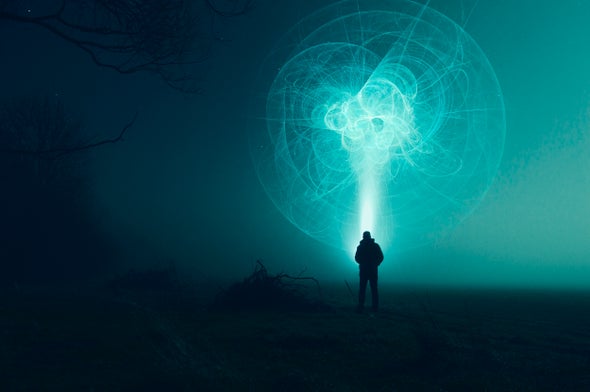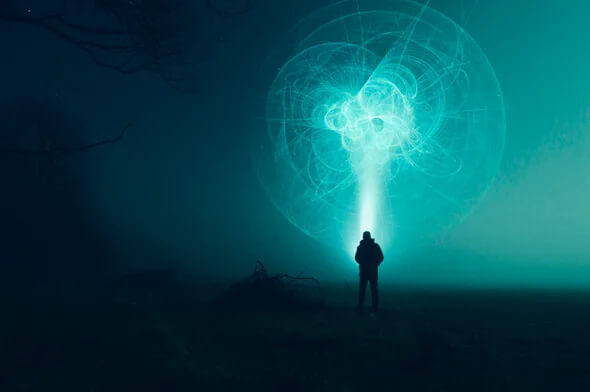
Despite the naive storylines about interstellar travel in science fiction, biological creatures were not selected by Darwinian evolution to survive travel between stars. Such a trip would necessarily span many generations, since even at the speed of light, it would take tens of thousands of years to travel between stars in our galaxy’s disk and 10 times longer across its halo. If we ever encounter traces of aliens, therefore, it will likely be in the form of technology, not biology. Technological debris could have accumulated in interstellar space over the past billions of years, just as plastic bottles have accumulated on the surface of the ocean. The chance of detecting alien technological relics can be simply calculated from their number per unit volume near us rather than from the Drake equation, which applies strictly to communication signals from living civilizations.
On a recent podcast about my book Extraterrestrial, I was asked whether extraterrestrial intelligence should be expected to follow the rational underpinning of morality, as neatly formulated by the German philosopher Immanuel Kant. This would be of concern to us during an encounter. Based on human history, I expressed doubt that morality would garner a global commitment from all intelligent beings in the Milky Way.
Instead, a code of conduct that allows systems of alien technology to dominate the galaxy would also make them more likely to be the way we would first encounter extraterrestrials. Practically, this rule will act as a sort of Darwinian evolution by natural selection, favoring systems that can persevere over long times and distances; and multiply quickly and spread at the highest speed with self-repair mechanisms that mitigate damage along their journey. Such systems could have reached the habitable zones around all stars within the Milky Way, including our sun, by now. Most stars formed billions of years before ours did, and technological equipment sent from habitable planets near them could have predated us by enough time to dominate the galaxy before we came to exist as a technological species.
Our own artificial intelligence systems are likely to supersede many features of human intelligence within the coming decade. It is therefore reasonable to imagine AI systems connected to 3-D printers that would replicate themselves on planet surfaces and adapt to changing circumstances along their journey between planets through machine learning. They could hibernate during long journeys and turn on close to stars, using starlight to recharge their energy supply. With this in mind, it is conceivable that the flat thin structure that might have characterized the interstellar object ‘Oumuamua was meant to collect sunlight and recharge its batteries. The same dish could have also served as a receiver for communication signals from probes that were already deposited on habitable planets, like Earth or Mars.
And speaking about such probes—if one or more of the unidentified aerial phenomena (UAP) discussed in the Pentagon report to Congress is potentially extraterrestrial in origin, then scientists have an obligation to decipher their purpose by collecting more data on their behavior. Owing to the long time-delay of any signals from their point of origin, these objects are likely to act autonomously. How could we tell whether an autonomous extraterrestrial AI system is a friend or a foe?
Initial impressions can be misleading, as in the story of the Trojan Horse used by the Greeks to enter the city of Troy and win the Trojan War. Therefore, we should first study the behavior of alien probes to figure out what type of data they are seeking. Second, we should examine how they respond to our actions. And with no choice left, we should engage their attention in a way that would promote our interests.
But most importantly, humanity should avoid sending mixed messages to these probes, because that would confuse our interpretation of their response. Any decision on how to act must be coordinated by an international organization such as the United Nations and policed consistently by all governments on Earth. In particular, it would be prudent to appoint a forum composed of our most accomplished experts in the areas of computing (to interpret the meaning of any signal we intercept), physics (to understand the physical characteristics of the systems with which we interact) and strategy (to coordinate the best policy for accomplishing our goals).
Ultimately, we might need to employ our own AI in order to properly interpret the alien AI. The experience will be as humbling as relying on our kids to make sense of new content on the internet by admitting that their computer skills exceed ours. The quality of expertise and AI might be more important than physical strength or natural intelligence in determining the outcome of a technological battlefield.
Being the smartest species on Earth, our fate has been under our control so far. This may not hold true after our encounter with extraterrestrial AI systems. Hence, technological maturity obtains a sense of urgency for Darwinian survival in the global competition of Milky Way civilizations. Only by becoming sufficiently advanced can we overcome threats from alien technological equipment. Here’s hoping that in the galactic race, our AI systems will outsmart the aliens. Just as in the gunfights of the Wild West, the survivor might be the one who is first to draw a weapon without hesitation.
Please remember we all have different opinions, Think Before You Speak or Write Something that is cruel to Others. After all, We are only Humans. Wishing you clear skies and wide eyes. To share your experiences or just leave a comment there is a area below. Read or listen.
We are the change the world has been waiting for!
Have you witnessed an unidentified flying object?
You are not alone. Whether you think UFOs are black projects, extraterrestrial craft, something else altogether, or just don’t know, again, you are not alone!
Unconditional love. The road we all get to walk. Unconditional love is like the sun.
WE ARE THE DISCLOSURE !~ WE HAVE NEVER BEEN ALONE
Love and Regards,
Thank You,
Nancy Thames
Source: Scientific American


